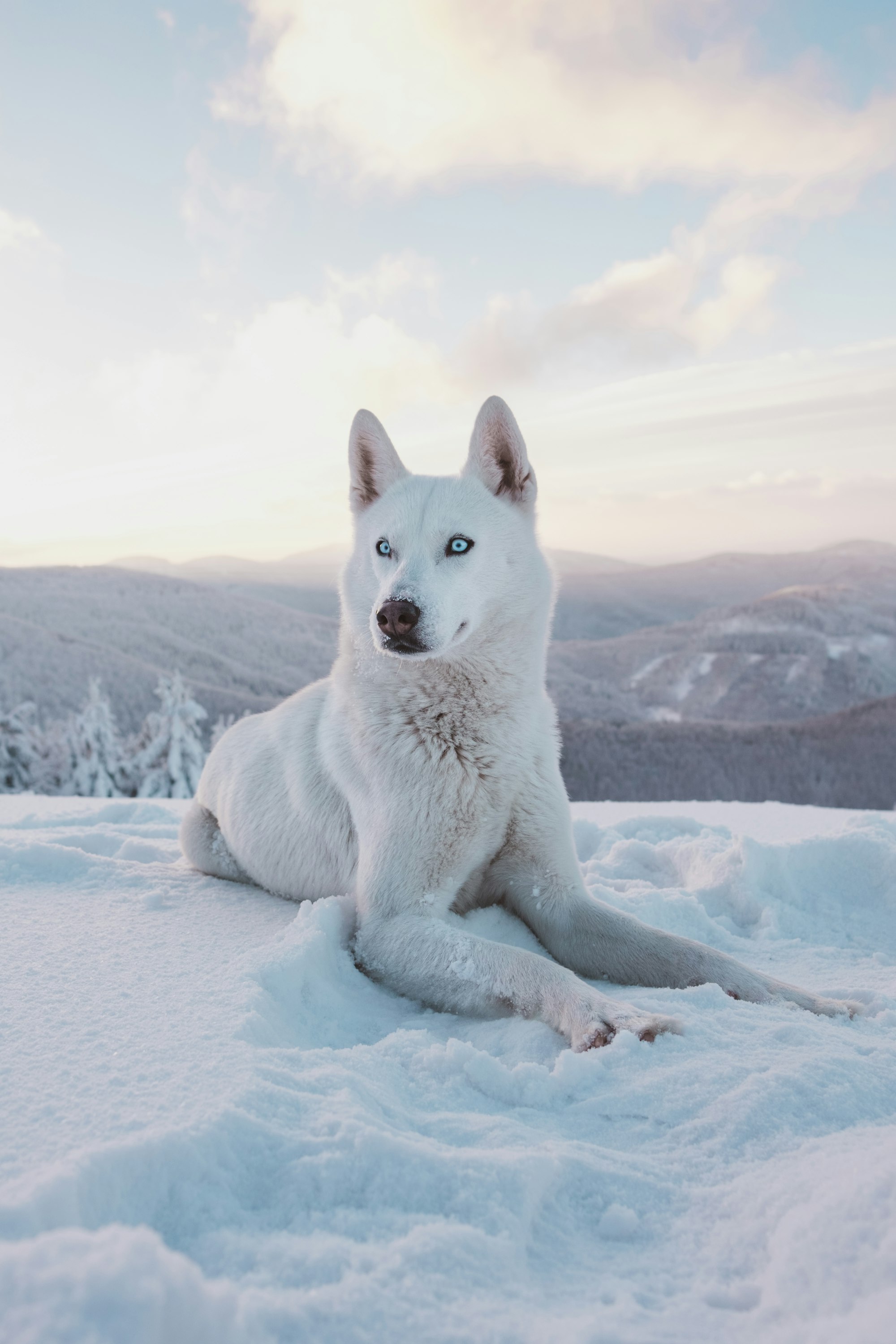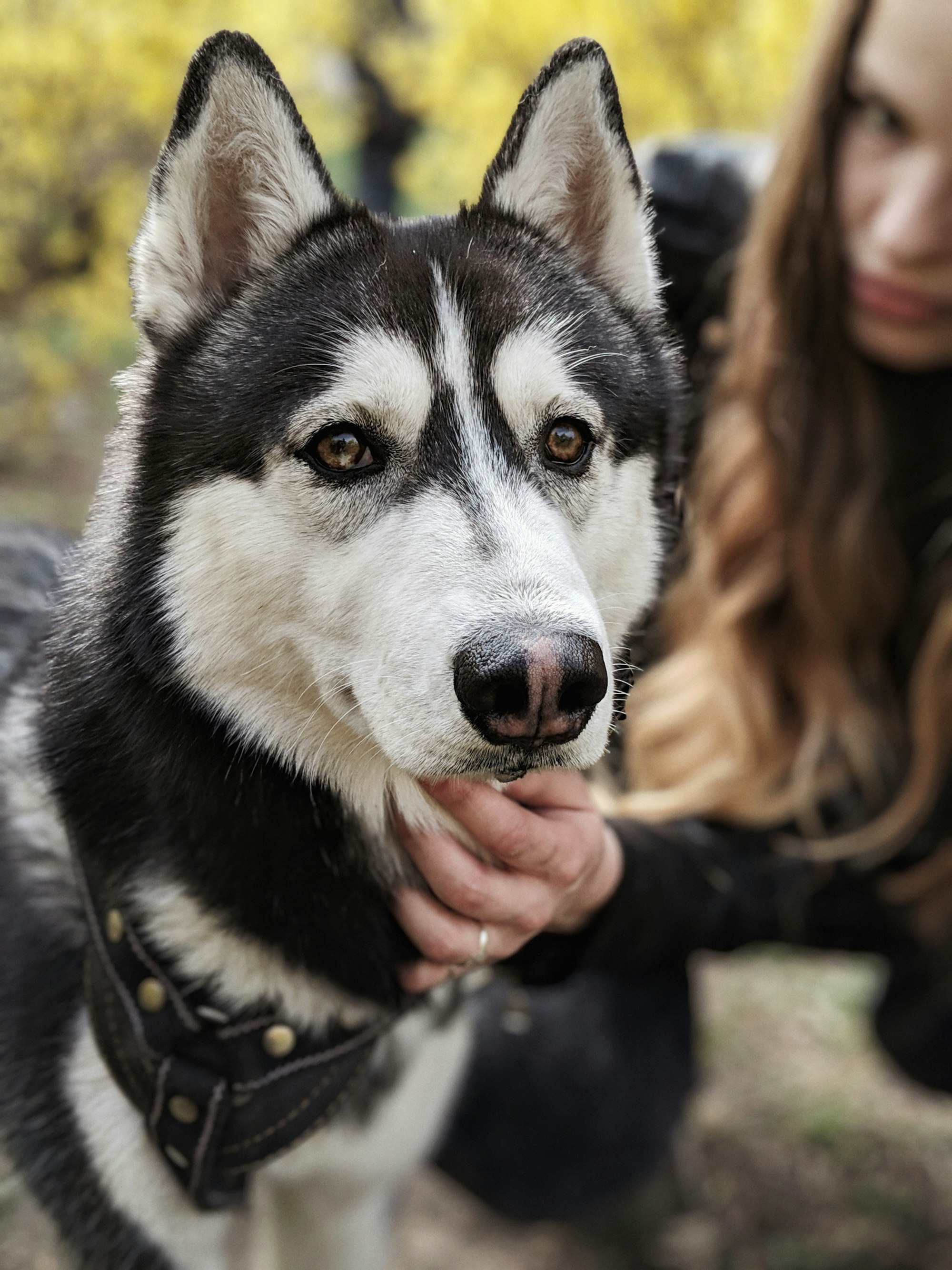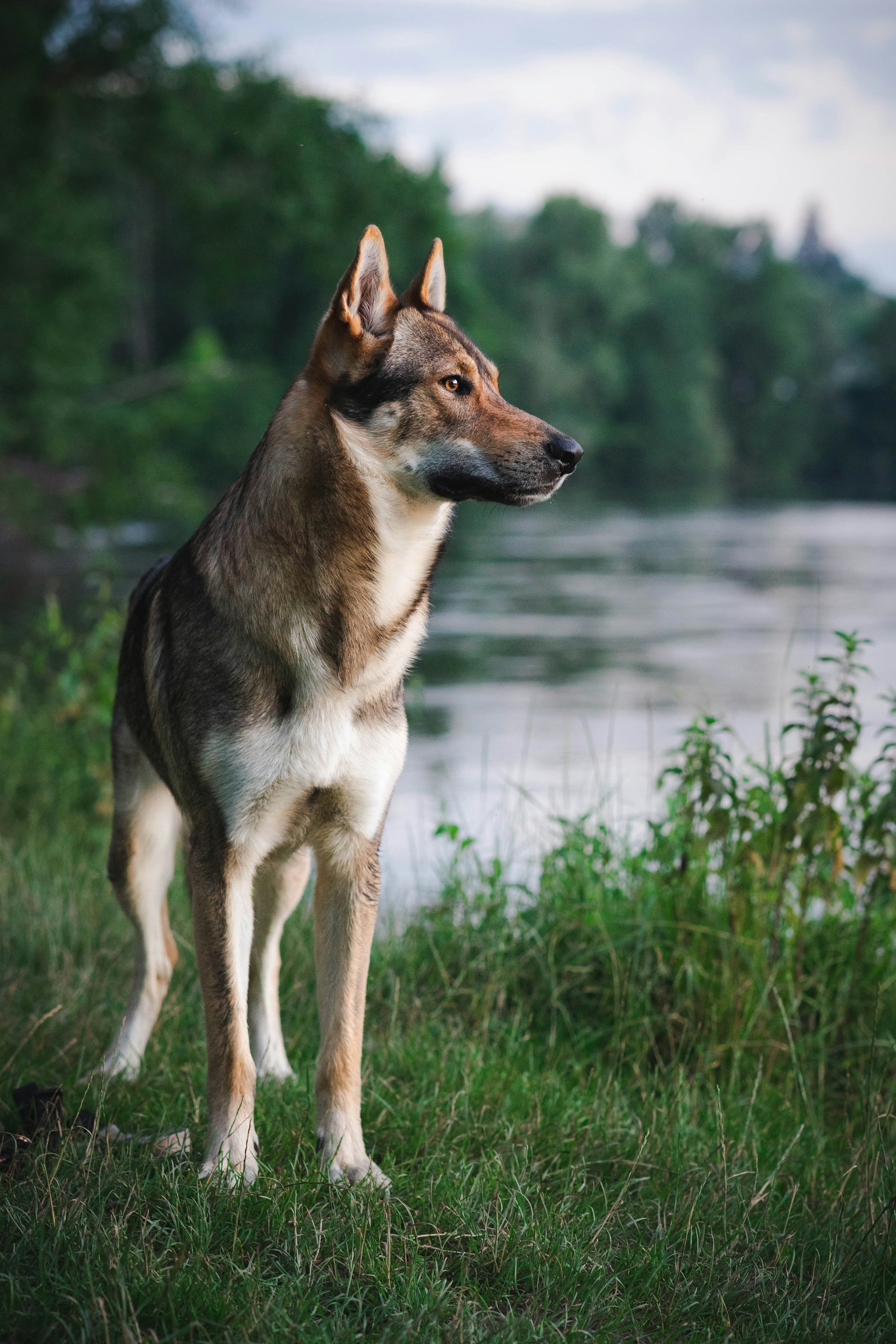From the lovable furball in your living room to the majestic wolves in the wilderness, the genetic relationship between dogs and wolves is more than just coincidental. Scientific progress in the field of genetics has cemented this ancestral bond, tracing the lineage of today's domestic dogs straight back to their wolf ancestors.
This fascinating revelation often captures the imagination of dog lovers and canine researchers alike, prompting a compelling question: which dog breeds still carry the most wolf-like traits? As more genetic data becomes available, this question continues to captivate experts and pet owners, fueling ongoing research and discussion in the world of canine genetics.
Dogs and Wolves: The Shared Ancestry
Let's embark on an exciting journey into the canine-wolf connection. What is it about these two species that interlink their destinies?
Well, it all begins with the process of evolution. As history has it, wolves ventured closer to human camps thousands of years ago, drawn by the lure of food. Some brave wolves began to interact with humans, marking the beginning of a process known as domestication. Over generations, these wolves evolved into a more human-friendly species, becoming the dogs we know and love today.
Now, one might wonder, how can we say that all dogs share a genetic connection to wolves? The answer lies in the DNA. Both dogs and wolves share 98.8% of their DNA, hinting at their shared ancestry.
Breeds that Echo Their Wolfish Origins
While every dog breed shares a certain connection with wolves, some breeds are more genetically similar to their ancestors than others. This doesn't mean these breeds are half-wolf or that they should be treated like wolves. However, their physical appearance and behavioral traits often mimic those of their wild cousins.
One breed that often comes to mind when discussing wolf-like dogs is the Alaskan Malamute. This breed boasts an undeniably striking resemblance to the grey wolf. The Alaskan Malamute has a robust build, a thick double dog coat of fur that changes with the seasons, and a color that ranges from light gray to black, which is similar to their wolf ancestors. They even share the same need for social interaction as wolves do, making them excellent family pets.
Similarly, Siberian Huskies also bear a strong resemblance to wolves. With their piercing blue or multi-colored eyes, huskies are often mistaken for wolves. They possess a high energy level, a trait commonly associated with their wild cousins.
The German Shepherd is another breed that's often compared to wolves due to their similar physique and facial structure. Their intelligence and versatility echo the adaptability wolves require to survive in the wild.

Dog-Wolf Similarities Beyond Looks
The canine-wolf connection isn't just about looks. There are behavioral similarities that many dog breeds share with wolves.
For instance, the use of a scratch board is a popular training method for both dogs and wolves, stimulating their natural instinct to scratch and dig. Similarly, the use of puzzle toys is also common in enriching the lives of dogs and wolves, providing mental stimulation and mimicking the problem-solving skills they'd need in the wild.
In terms of health, it's essential to know how often a vet should be consulted. Just as wolves in the wild face various health issues, domestic dogs are susceptible to a range of illnesses, including tooth decay. Regular vet visits and good oral hygiene can help prevent such problems.
Interactive Activities for Your Wolfish Pup
If you're the proud owner of a wolf-like breed, engaging them in activities that cater to their inherent traits can be beneficial.
For instance, using a flirt pole can be an excellent way to encourage your dog's natural prey drive, providing a healthy outlet for their energy. This activity can mimic the chase and capture game often seen in wolves. Remember, though, that every dog is an individual and not all might enjoy this activity. Always respect your dog's preferences and comfort.
The Dual Nature of Domestication and Wild Instincts
As we delve deeper into the canine-wolf connection, we start to understand the fascinating balance between domestication and wild instincts that exists within our dogs.
Yes, your dog may enjoy the comfort of your home, the warmth of your affection, and the security that comes with being a part of a human family. But it's also true that under all that domesticity, there lurks the shadow of their wolf ancestors. And sometimes, this shadow comes to the surface, manifesting in behaviors and traits that remind us of their wild lineage.
For instance, consider the common trait of digging. This is a behavior that's common among wolves who often dig dens for shelter or to hide food. When your dog digs up your backyard, it's essentially the echo of this wild instinct, albeit in a domestic setting.
Then there's the act of howling. Wolves howl to communicate with their pack over long distances, a behavior rarely seen in most domestic dogs. However, breeds like the Alaskan Malamute and Siberian Husky, known for their wolf-like appearances, are also renowned for their vocal nature, including their penchant for howling.
The Importance of Social Structure
Wolves are renowned for their intricate social hierarchies, where each pack member assumes a specific function. The leading alpha couple guides the group, while others adopt varied responsibilities like hunting, caregiving, and even tending to the young. Intriguingly, one can witness comparable social dynamics within a household of multiple dogs, including breeds like the Blue Lacy.
For example, you may have one dog that naturally assumes the leadership role during walks, another that eagerly welcomes newcomers, and yet another who shows particular care toward puppies or smaller breeds. Understanding these inherent social tendencies can offer valuable insights into managing a multi-dog household effectively. Tailoring individual training and attention to each dog can help preserve a sense of equilibrium and well-being among your canine family members.
Respecting the Wild Within
Embracing the canine-wolf connection means respecting the wild instincts within our domestic dogs. It's about providing them with the right outlets for their instincts, be it through physical exercise, mental stimulation, or social interaction.
For instance, regular exercise can help channel your dog's energy in a positive way, preventing destructive behaviors often linked to boredom or pent-up energy. Mental stimulation, on the other hand, can satisfy their instinct to explore and solve problems. This could be through puzzle toys, training sessions, or even simple games of hide and seek.
Finally, social interaction is crucial. Like wolves, dogs are social animals. They crave companionship and thrive on interaction, be it with humans or other dogs.

Breeds with the Strongest Canine-Wolf Connection
As we further delve into the canine-wolf connection, it's interesting to explore the breeds with the strongest ties to their wild ancestors. These breeds often exhibit strong physical resemblances and share behavioral traits with wolves.
In addition to the Siberian Husky, Alaskan Malamute, and German Shepherd, there are several other breeds with notable wolfish characteristics.
Czechoslovakian Wolfdog
The Czechoslovakian Wolfdog, for example, was explicitly bred to harness the robust health and survival instincts of the Carpathian wolves and the trainable nature of the German Shepherd. This breed is extremely active and highly intelligent.
Saarloos Wolfdog
The Saarloos Wolfdog is another breed with strong wolf connections. Bred by crossing a German Shepherd with a Eurasian Grey wolf, the Saarloos Wolfdog bears striking similarities to wolves in appearance and temperament. This breed requires plenty of socialization and exercise due to their energetic nature.
Tamaskan Dog
The Tamaskan Dog, a breed developed in Finland, was specifically bred to look like a wolf while possessing the favorable traits of domestic dogs. Tamaskans are known for their intelligence, sociability, and versatility in activities such as agility and obedience training.
The Wild Spirit and the Loving Companion
It's essential to remember that while these breeds may have a closer connection to their wild counterparts, they are still domestic dogs. They have been bred for generations to live alongside humans.
Their wild ancestry does not make them any less suitable as family pets. However, their distinctive wolfish characteristics might require specific care and understanding.
For instance, due to their high energy levels and sharp minds, wolf-like dog breeds often need plenty of physical exercise and mental stimulation. Activities such as hiking, agility training, puzzle-solving can keep these dogs happy and well-behaved.
Moreover, their wolfish heritage makes them more prone to developing strong bonds with their pack - your family. Hence, they thrive in environments where they get ample love, attention, and interaction.
A Symbol of Resilience and Adaptability
The wild ancestry of dogs symbolizes resilience and adaptability. From the fierce, independent wolves to the loyal, loving dogs, this evolutionary journey is a testament to survival against all odds.
Just like wolves, dogs have proven their ability to adapt to changing environments and situations. Their enduring survival and continued evolution in the face of challenges represent their innate resilience.
From Wild to Domestic: The Evolutionary Journey
Grasping the link between canines and wolves helps us value the transformative path our dogs have traversed. From untamed origins to modern household pets, they've been humanity's steadfast friends, serving as everything from hunters to emotional support animals. Along this journey, they've shown remarkable adaptability, meeting the demands of their human families. Interestingly, the way dogs like Yorkies shed—or don't shed—can also offer clues into their evolutionary background.
Unraveling the Canine-Wolf Connection
Unraveling the canine-wolf connection isn't just about scientific exploration. It's a celebration of nature and the incredible journey of a species. It's about acknowledging and respecting the wild origins of our beloved pets, cherishing the ancient bond that connects us with them.
In the end, whether your dog bears a striking resemblance to a wolf or couldn't be more different, it's this shared ancestry that ties them to the wonderful tapestry of the natural world. And as dog lovers, there's no greater joy than to appreciate, understand, and celebrate this connection.
Harnessing Technology to Bridge the Gap
As we explore the wild ancestry of our domestic dogs and the breeds closest to their wolf ancestors, we can't ignore the role of technology in modern pet care. Technology has paved the way for innovative solutions to ensure our pets' safety and wellbeing. A shining example of this is Fi, the next-generation dog collar.
Fi dog collars are not just accessories; they are smart devices designed to keep your dog safe and healthy. Much like how wolves use their instincts and environmental cues to survive in the wild, Fi uses modern technology to help you protect and care for your dog in the urban jungle.
Activity Tracking with Fi
Wolf-like dog breeds, as we have discussed, are known for their high energy levels and active nature. To cater to these traits, the Fi dog collar comes equipped with a built-in activity tracker.
This tracker monitors your dog's daily activities, giving you insight into their exercise levels. It’s an excellent tool for ensuring that breeds like the Alaskan Malamute, Siberian Husky, Czechoslovakian Wolfdog, Saarloos Wolfdog, and Tamaskan Dog are getting the amount of physical activity they need to channel their high energy levels.
Just as wolves stay active by hunting and patrolling their territory, your dog needs regular exercise to stay healthy and happy. The Fi collar helps you ensure they're getting just that.
Safety Above All
In the wild, wolves always know where they are. They're excellent navigators, familiar with their territory and aware of their pack's whereabouts. Fi dog collars take a page from this aspect of wolf behavior.
These smart collars feature a built-in GPS tracker that allows you to monitor your dog's location in real-time. If your dog ever goes missing, the Fi collar's GPS feature can help you locate them quickly.
This is especially helpful for wolf-like breeds known for their curiosity and tendency to roam, offering you peace of mind knowing your adventurous companion is safe.

The Intersection of Ancient Roots and Modern Care
In essence, Fi dog collars are a nod to our dogs' wolf ancestors. They take into account the unique traits and needs of your dog, shaped by their wild ancestry, and provide a modern solution to meet these needs.
As we celebrate the canine-wolf connection, it's exciting to see how modern technology like Fi allows us to provide better care for our dogs.
By combining our understanding of their wild roots with advanced technology, we can ensure our dogs' safety and health. It's a true testament to how far we've come in our journey with dogs - from the wilderness of ancient times to the interconnected world of today, the bond between humans and dogs remains as strong as ever.
Conclusion:
In conclusion, the canine-wolf connection reveals the deep, intricate ties between our domestic dogs and their wild ancestors. From breeds such as the Siberian Husky, Alaskan Malamute, German Shepherd, Czechoslovakian Wolfdog, Saarloos Wolfdog, to the Tamaskan Dog, we see the echo of wolves in our homes. Yet, these breeds remain our loyal and loving companions, shaped by centuries of domestication. Embracing this connection helps us appreciate their wild instincts, meet their needs, and enrich their lives. Further, recognizing the importance of activity, socialization, and mental stimulation for these breeds helps foster a healthy, happy pet.
The Fi dog collar, with its activity and GPS tracking, symbolizes the convergence of our dogs' ancient roots with modern pet care. The tracker ensures they get enough exercise and keeps them safe, addressing concerns specific to active, wolf-like breeds. It stands as a testament to our evolving relationship with dogs, blending respect for their wild ancestry with the benefits of technology. As we continue uncovering the canine-wolf connection, we not only celebrate the past but also look forward to a future where our understanding of their wild origins helps us care for them in more nuanced and effective ways.

